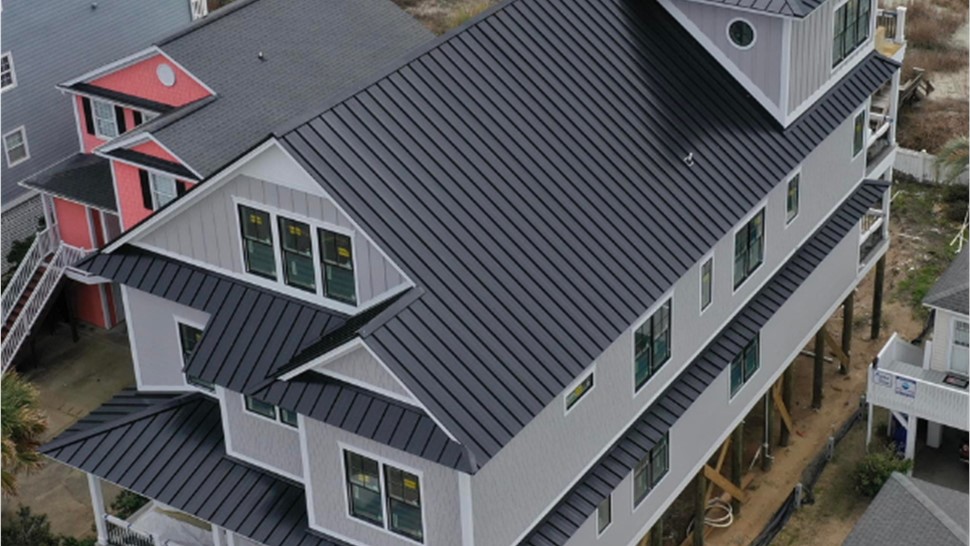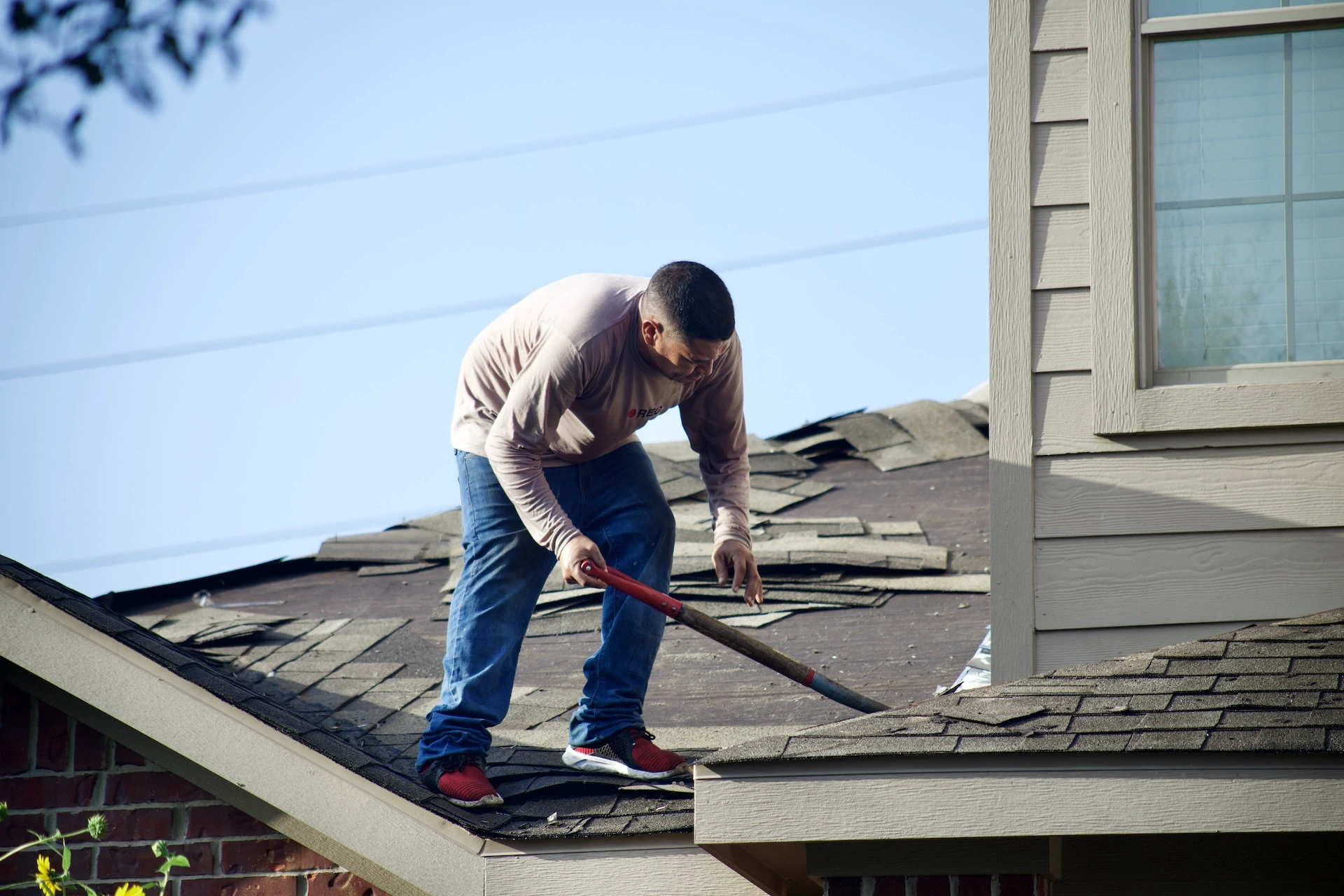Discover Typical Roof Covering Issues and Exactly How to Address Them Efficiently
When it comes to your roof covering, spotting troubles early can save you time and cash. What specific actions should you take to guarantee your roof covering stays in top problem?
Determining Roofing System Leakages and Their Causes

Next, analyze your roofing system from the exterior. Look for missing out on or split ceramic tiles, rusted flashing, or harmed gutters.
During heavy rainfall, observe your roof for any kind of merging water or drips. This can reveal leaks that could not show up throughout completely dry problems. By remaining attentive and consistently inspecting your roofing, you can catch leaks early and secure your home from more damages.
Taking care of Missing or Damaged Tiles
When you observe missing or harmed roof shingles, it's necessary to act promptly to stop additional concerns. You'll wish to determine the extent of the damage, fix any missing tiles, and take into consideration precautionary upkeep tips to maintain your roofing system in leading shape. Taking these actions can save you time and money down the roadway.
Recognizing Tile Damage
Although roof shingles are made to hold up against the elements, they can still endure damages over time, leading to possible leakages and expensive repair services. To determine shingle damage, beginning by examining your roof covering for missing, fractured, or crinkled shingles. Frequently checking your roofing system, specifically after serious climate, can aid you catch concerns early and keep the stability of your home.
Fixing Missing Tiles
After detecting tile damage, the next step is dealing with any missing out on or harmed tiles promptly to protect against more concerns. If you can, climb up onto your roofing securely, putting on proper equipment. Taking activity rapidly will assist keep your roof covering's honesty and prolong its life-span.
Preventive Upkeep Tips
Just how can you maintain your roofing system in top form and prevent shingles from going missing out on or obtaining harmed? Regular inspections are vital. Inspect your roofing at least two times a year and after extreme weather. Look for indications of wear, such as curling, breaking, or loose tiles.
Keep gutters clean and without debris to assure appropriate water flow and avoid tile damages. Cut looming branches to decrease the risk of them scraping versus your roof throughout tornados.
Take into consideration using a safety sealer to extend your shingles' life expectancy. Finally, if you see any kind of issues, resolve them immediately to avoid expensive fixings later on. Taking these precautionary procedures can save you time and money while ensuring your roof remains resilient and trusted.
Recognizing Roofing Ventilation Issues
Proper roof air flow is essential for maintaining the longevity and effectiveness of your roof covering system, as it helps control temperature level and dampness degrees in your attic. Without sufficient ventilation, you may deal with issues like too much warmth accumulation, leading to early tile deterioration, or boosted humidity that can cause mold and mildew growth and wood rot.
To examine your roof ventilation, check for indications of overheating, such as warped shingles or a hot attic room. Look for blocked vents, which can limit air movement and trap warmth. You must assure your intake and exhaust vents are well balanced, permitting proper air exchange.
Addressing these concerns immediately can protect your roofing and conserve you from costly repair services down the line. Stay positive in keeping your roof's ventilation to protect your home.
Dealing With Roofing System Moss and Algae Growth
While you might appreciate the natural appearance of moss and algae on your roofing system, these microorganisms can lead to considerable troubles if left untreated. They trap wetness, which can cause shingle damage and leaks. To tackle this concern, beginning by getting rid of any type of visible development. Use a soft-bristle brush to delicately scrub away the moss and algae, being cautious not to harm your shingles.
Next, take see this site into consideration applying a specialized roofing system cleaner or a blend of water and bleach to kill continuing to be spores. Routine examinations and upkeep will certainly help avoid moss and algae from returning, guaranteeing your roof covering continues to be in good shape for years to come.
Repairing Tornado Damage and Wind Concerns
After a storm, it's essential to analyze your roofing for damages caused by high winds and heavy rainfall. Start by checking for missing out on or broken tiles, as these are usual casualties.
Look for any drooping areas, which may indicate water buildup or architectural concerns. If you find any particles, like branches or leaves, eliminate them thoroughly to avoid additional damage. If your seamless gutters are clogged, clear them to assure correct drain.

For little repairs, you could handle it yourself, however don't think twice to call an expert for considerable damage. Remember, acting promptly can conserve you from bigger troubles down the line, so take that analysis seriously and deal with any kind of concerns immediately.
Recognizing Indicators of Structural Damage
Exactly how can you inform if your roof covering is experiencing structural damages? Beginning by looking for noticeable sagging or dips in your roofline. These indicators indicate that the underlying framework may be endangered. Next off, check for fractures or spaces in the walls or ceiling, as these can signal moving or clearing up because of roofing system concerns. Take note of leaks or water stains, especially in areas where the roof meets walls. If you see missing out on or damaged roof shingles, it's crucial to resolve them swiftly, as they can expose your roofing to further damage. Check your attic for any signs of daylight peeking via, which might mean your roofing's stability is at threat. Finally, listen for uncommon my blog creaking or popping noises, as they may suggest architectural anxiety. If you see any one of these indicators, it's time to consult a roof expert for an extensive assessment.
Routine Maintenance Tips for Durability

Routine Examinations Relevance
Given that a roof is your home's first line of defense against the elements, routine inspections are important for preserving its honesty. You should examine your roof at least two times a year, preferably in spring and autumn, to catch prospective issues early. Keeping up with these assessments can protect against costly repair work down the line and prolong your roof covering's life expectancy, ensuring your home remains safe and sound for years to come.
Correct Gutter Maintenance
Routine roofing system assessments naturally lead to the significance of correct rain gutter maintenance. Examine your rain gutters for leaks or rust; they can cause water damage to your roofing system and home. By adhering to these ideas, you'll prolong your gutters' lifespan and secure your roof.
Often Asked Concerns
Exactly How Can I Choose the Right Roofing Material for My Home?
To pick the right roof material for your home, consider climate, longevity, and looks. Research study choices like asphalt tiles, metal, or floor tile. Think of upkeep requirements and budget to discover what matches Read More Here you best.
What Are the Signs I Need a Roof Substitute Rather of Repair?
If you discover prevalent leaks, sagging, or missing tiles, you could need a roof covering replacement. Likewise, if your roofing's nearing its life-span or has substantial damage, it's time to ponder a full replacement as opposed to just repairs.
Just how Frequently Should I Schedule Professional Roof Covering Inspections?
You need to arrange expert roofing evaluations at the very least annually, ideally in springtime or loss. This helps capture possible issues early, guaranteeing your roof stays in excellent problem and lengthening its lifespan.
Can I Install a New Roofing Over My Old One?
You can set up a brand-new roofing system over your old one, however it's important to inspect neighborhood building regulations and assure the existing roofing system's condition is sound. This technique can conserve time and money, however take into consideration possible difficulties.
What Is the Ordinary Lifespan of Different Roofing Materials?
The average life expectancy differs by material: asphalt roof shingles last 15-30 years, steel roofing systems can last 40-70 years, while floor tile or slate roofs might exceed half a century. Select sensibly based on your climate and spending plan.
Verdict
By remaining vigilant and attending to typical roof issues quickly, you can protect your home and expand your roofing system's life expectancy. Consistently evaluate for leaks, harmed shingles, and ventilation problems, and tackle moss or algae development prior to it aggravates - roofing materials hawaii. After tornados, look for any kind of damage and make needed repair work. With a little routine maintenance, you'll not just guard your financial investment however likewise appreciate comfort understanding your roof remains in top form. Do not wait-- act now!
Comments on “Modern construction require advanced roofing materials hawaii to meet durability goals.”